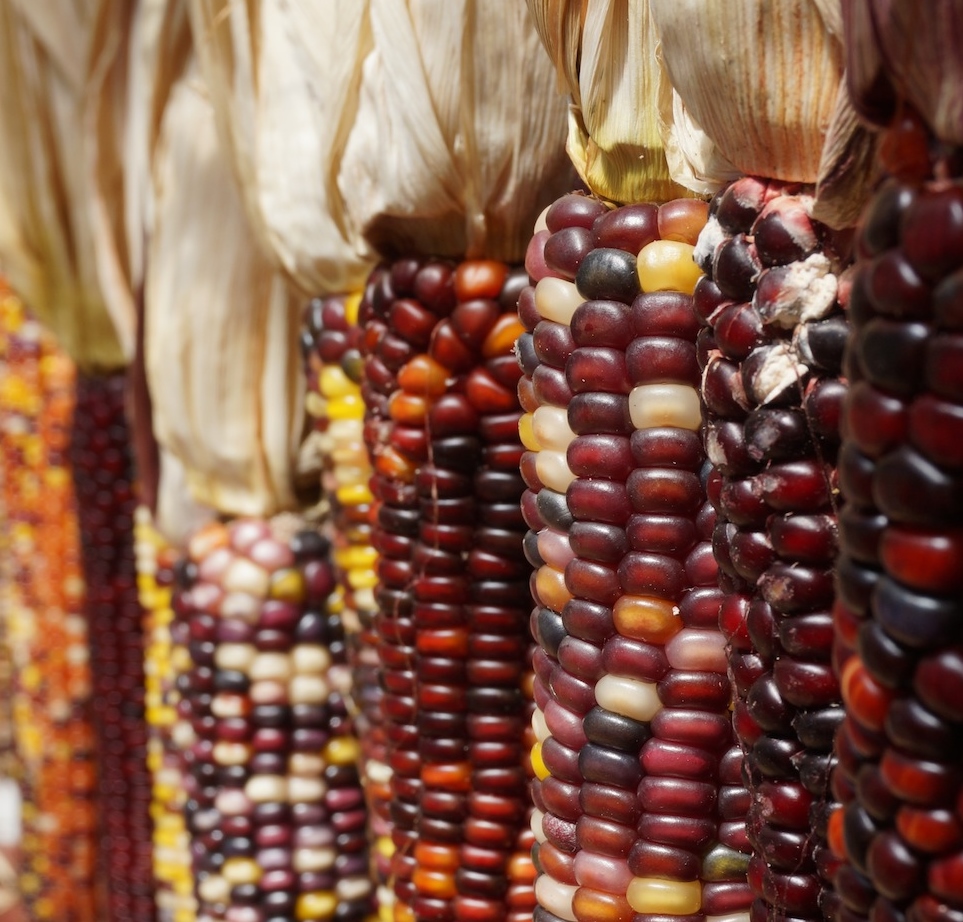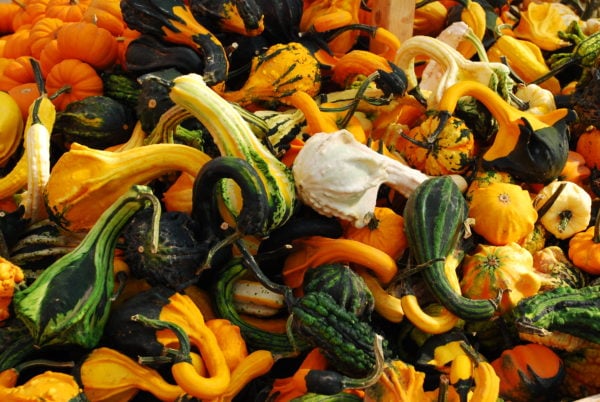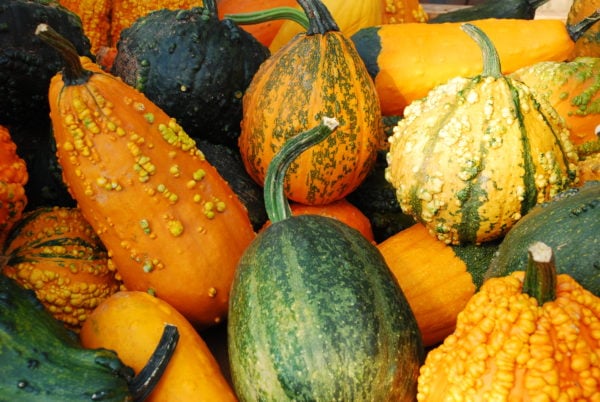Bittersweet and rose hips grew wild alongside the driveway of my childhood home. Sometimes, in high school, I would clip some and use it to decorate my bedroom. Imagine that. Fall decor, there for the taking. Having lived in urban or suburban environments basically ever since, remembering the simplicity of this taking from nature’s bounty fills me with wonder.
Maybe you are one of the lucky people whose yard borders some wild tangles where bittersweet and rose hips like to grow. Maybe you have a sprawling garden with pumpkins and gourds.
But if not, David Howe of Weaver’s Orchard fills the garden center with nature’s bounty. Wheat stalks! Indian corn!
And oodles of pumpkins and gourds!
Did you know you can dry decorative gourds so that they will last for years, instead of just a few weeks? This makes small gourds light enough to attach to a wreath, points out Rebecca Howe, Weaver’s Food Safety Manager and Wholesale Accounting Manager and wife of David Howe.
Here’s how to do it. But first, be sure to plan ahead. It can take at least three weeks for a small gourd to dry completely. Large gourds take much longer. Drying time depends on the warmth and amount of air circulation in the drying environment.
- Select the right gourds.
- Make sure they are free from dents, bruises and scratches. If the skin is completely intact, that means bacteria doesn’t have an entryway into the fruit, which will cause rotting. As you inspect the gourds, be careful not to puncture them!
- See if they still have a three-to-four-inch stem attached. This looks pretty, helps with evaporation, and can make it easier if you want to hang the gourd by its stem once it is dry. In some cases, however, the stem may drop off during the drying process.
- Wash and rinse the gourds. Wash with soap and water or a weak solution of bleach and water (the bleach may slow any mold growth later). (Or, washing with a borax solution can make the colors brighter.) Rinse them using cold, bleach-free water. Washing is very important because it decreases the chance of soil-borne bacteria entering the fruit (just in case there are any small holes). Dry gently with a soft towel.
- Find a good drying space. A dry, dark, warm room with good air circulation works best. Humidity and dampness are not your friends here. Wikihow recommends outdoor drying because large quantities of drying gourds smell funky, but the University of Illinois Extension says the heat and darkness of an indoor environment keep the gourd dry, colorful and disease-free.
- Dry the gourds on a pallet or other elevated surface. Think: air circulation. You can also dry the gourds on newspapers, but you won’t get that nice air circulation. Rotate the gourds periodically so they will dry evenly. TIP: Mold on the outside of the gourd is okay. Softness isn’t. If the outside of the gourd starts to gather mold as it dries, carefully scrape it off. Mold is more common with larger gourds because they take longer to dry. If the gourd becomes soft, that means it has started to rot. Same thing if it shrivels.
- See if it’s done. The dried gourd will feel light, and you’ll hear seeds rattling. If you want to hurry the process, some people have reported success with placing a gourd in the oven at a VERY low temperature, but this can make the shell wrinkly.
- Wash the gourd in soapy water and scrape off the outer layer of skin. Use a kitchen knife (steel wool and sandpaper will create a lot of scratches).
- Wax or shellac the gourd for further preservation. Though the gourd will last a while without this step, it does increase the lifespan of your decor, especially if you want to use it as an outdoor decoration. You can use clear furniture wax or shellac, or, if you plan to compost the gourds later, you can use olive oil.
As you dry gourds this season, you will be participating in a long tradition. Gourds have been grown for thousands of years, some for eating, some used as artwork, and some gourds, like bottle gourds, have been dried so they could be used as containers. If you want to be especially inspired this fall, watch this short Smithsonian video about Peruvian gourd folk art. As you watch the video, suddenly, each of these dried plants looks more like a canvas, and in the hands of the artisans, takes on unimaginable beauty. May your own fall projects also bring beauty to your home!



